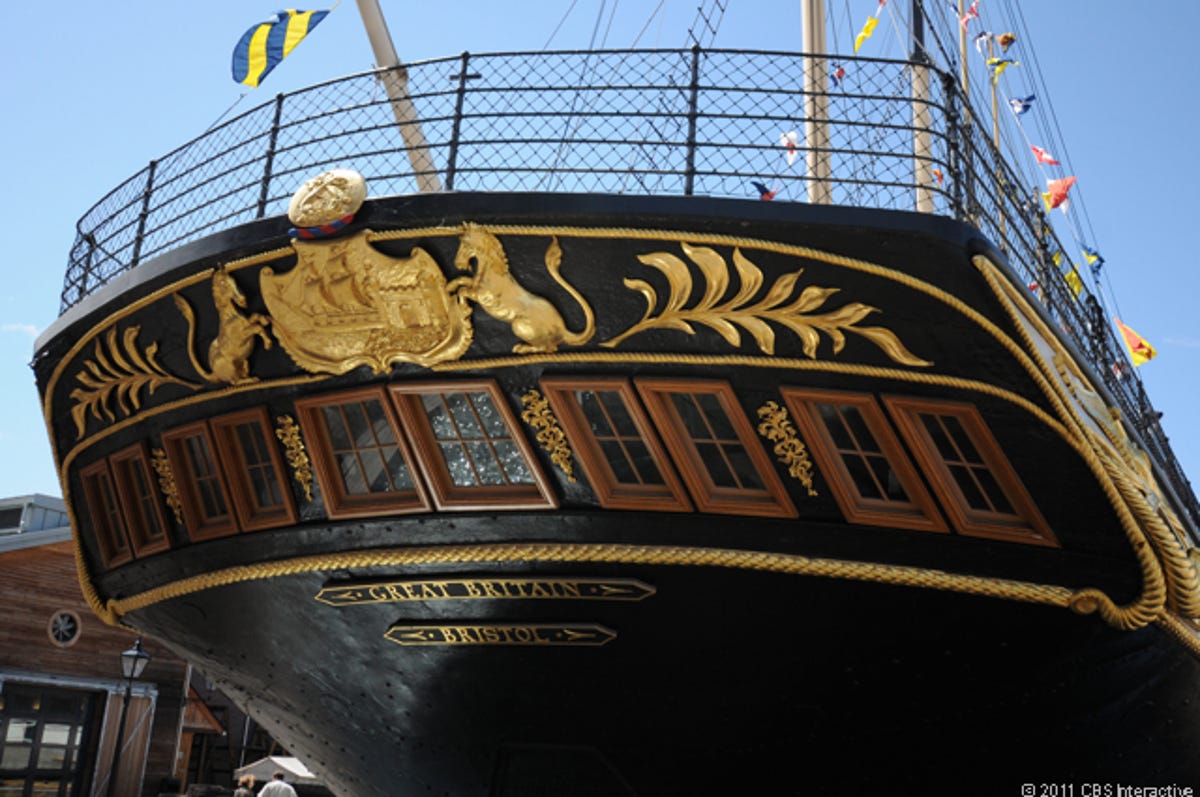The history of the world's first great ocean liner (photos)
Road Trip 2011: Permanently on display in Bristol is the SS Great Britain, which is considered the world's first great ocean liner and the first-ever to have an iron hull, steam power, and a propeller.

SS Great Britain
BRISTOL, England--This is the SS Great Britain, said to be the world's first great ocean liner, as well as the first-ever to have an iron hull, steam power, and a propeller. It was launched in 1843, the creation of Isambard Kingdom Brunel, a world-famous designer who also is credited with two other ships, the Great Western Railway, several London train stations, and a number of bridges. He is said to have been voted the second-most important Briton in history, after Winston Churchill.
The ship was built to handle luxury traffic to New York, it may have raised the bar on what was possible from engineering, speed (with the steam engine, the ship couldn't get becalmed on the high seas), and reliability standpoints, but it didn't convince many. Most people saw its size and its iron hull and thought it would break in half. Brunel sold very few tickets. It was only after its fifth trip, when it went aground in Ireland and didn't break up, that its stability was confirmed. But its owners went bankrupt salvaging it.
It was then bought and spent years taking people seeking their fortunes in a gold rush to Australia. It was expanded and became the fastest way to get Down Under.
Later, it was purchased and used as a floating warehouse before it was again beached and then stranded. Finally, it was rescued, and towed back to England. It is now the heart of one of the most popular attractions in the U.K.
Historic image of SS Great Britain
In this photograph taken by Fox Talbot, one of the first ever taken of a ship, the SS Great Britain is seen in Bristol in 1844, the year after it launched.
Unicorn
This is the bow of the SS Great Britain.
Leaving Liverpool
In this painting of the SS Great Britain, we see it leaving Liverpool on its first trip to Australia, in 1852.
Horn of plenty
This is the horn of plenty alongside the stern of the SS Great Britain. Brunel knew that the black iron of the ship was too stark to attract travelers on its own, so he had decorations like this added as a bit of marketing.
Hull front
This is the left side of the hull, at the bow of the SS Great Britain. At the museum in Bristol, the ship is displayed with the hull literally under water. A layer of water atop glass, that is. Underneath, the air is dehumidified in order to maintain the aridity necessary to keep the iron of the hull from decomposing.
Propped up
Here we see the hull propped up, as well as the dehumidifiers alongside the bottom edge of the ship.
Propeller
The SS Great Britain was the first ocean liner to have an iron hull, run on a steam engine, and have a propeller like this one.
Flags
These are the flags that today decorate the SS Great Britain.
Front of the deck
This is the front of the main deck of the SS Great Britain, as seen today at the museum in Bristol, England.
The deck
This is the rest of the main deck of the SS Great Britain.
Cannon
In order to deter pirates on the high seas, the SS Great Britain carried cannons like this one. As well, it resembled a war ship and would likely have avoided most pirates.
Engine
This is a view of the SS Great Britain's 1,000-horsepower steam engine.
Lower view of engine
This is another view of the ship's steam engine.
Drunk monkey
Throughout the interior of the ship, as displayed at the museum in Bristol, there are dioramas that are based on what were typical scenes aboard during journeys. One may have been mischievous monkeys breaking into passengers' liquor supplies.
Through the water
Here, we see the stern of the SS Great Britain through the thin layer of water that is on top of glass above the dehumidified iron hull, as seen at the museum in Bristol.
Infirmary
This is a representation of a typical day in the ship's infirmary during a voyage.
First class dining
Here, we see the first-class dining area aboard the ship.
Biscuit
This is an actual piece of hard-tack that a steerage passenger kept as a souvenir from a trip in 1874.

